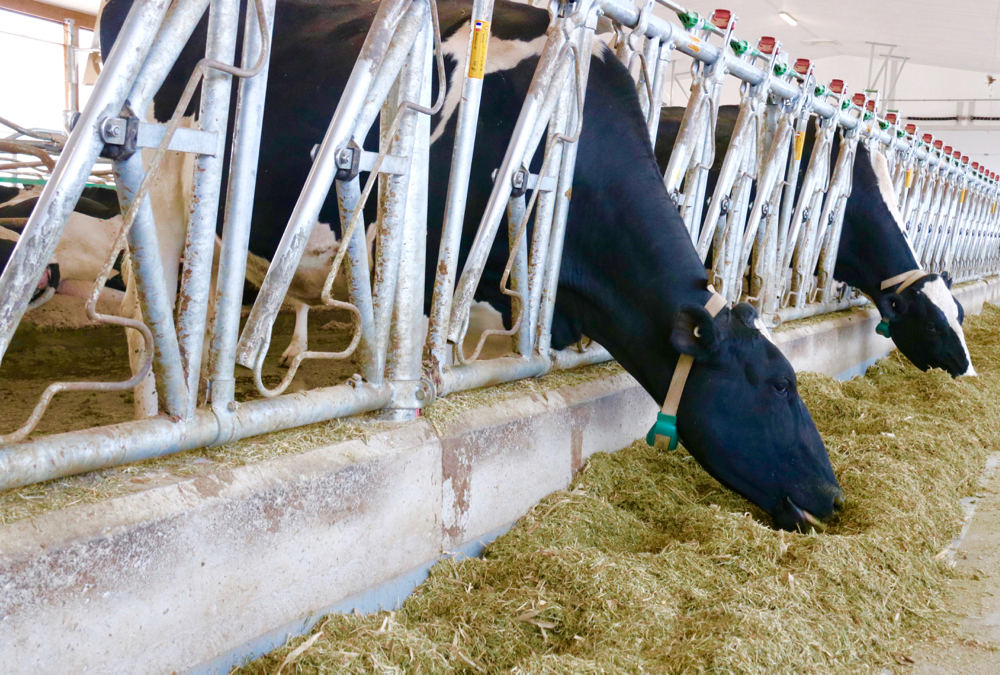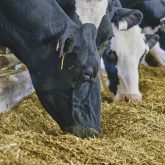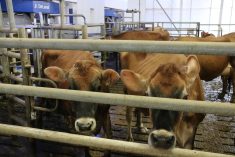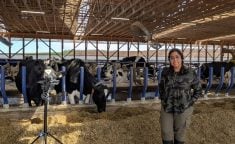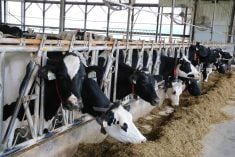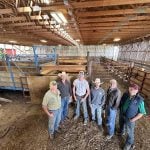Areas of consumer concern like climate change and animal welfare are driving the livestock discussion, but farmers are already regularly improving both areas while they make their farms more efficient.
That was the message from recent interviews conducted by Farmtario with a member of the leadership team behind Lactanet’s annual ranking of herd management scores across Canada, and with an Ontario dairy producer whose farm was near the top of that ranking in 2018.
Why it matters: If managed properly, changes to enhance animal welfare and reducing a farm’s carbon footprint can also enhance the financial bottom line.
Read Also
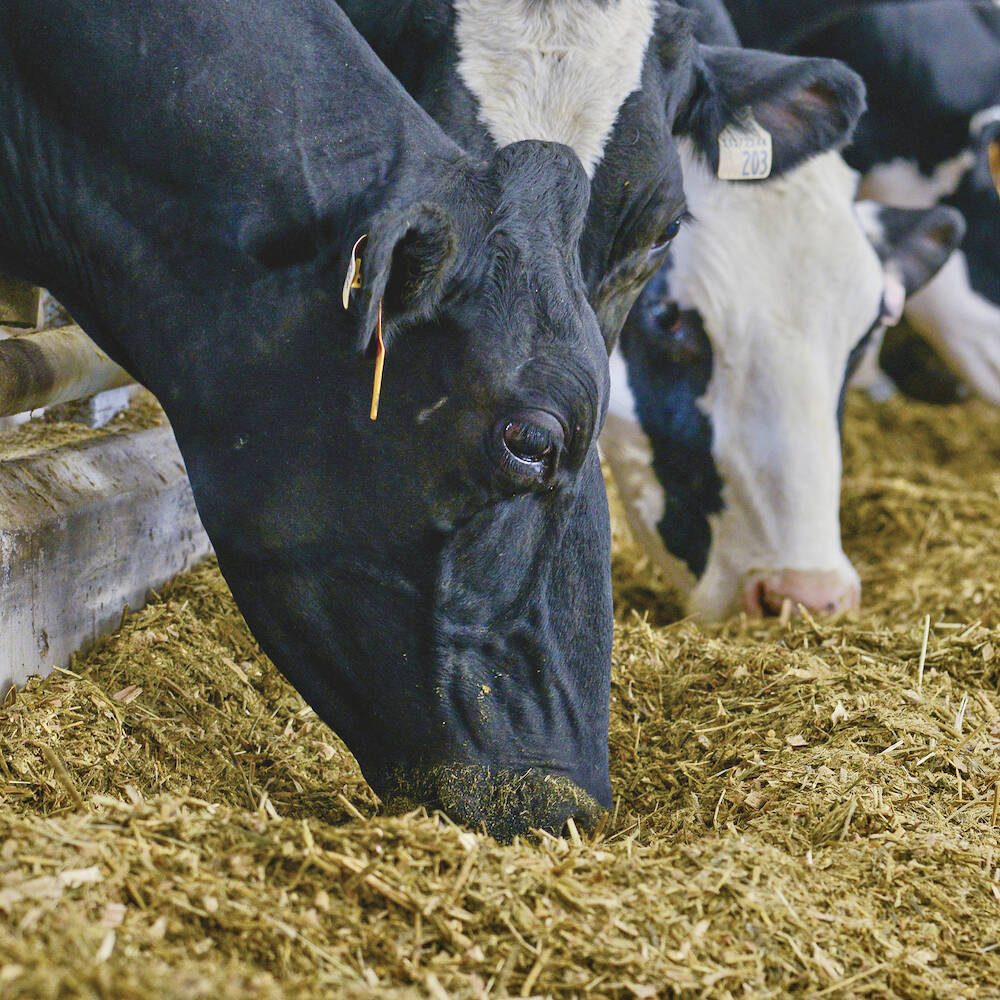
Byproducts with benefits for dairy cows
Local food processors can be a source of financially advantageous byproducts for dairy cows, but make sure the ration is properly balanced.
Lactanet’s National Director for Business Development, Richard Cantin, and Brussels-area producer Roger Haag were both asked, in an era of difficult-to-obtain quota, which management areas dairy farmers need to consider.
Likewise, Cantin was asked if enhancements in genomics — leading to an overall increase in the quality of dairy animals, as well as to a considerable increase in the proportion of those lesser-performing cows being cross-bred to beef — should influence on-farm decisions.
Both agreed, however, that concerns raised by the public are definitely starting to be heard more and more in the agricultural sector. To some degree, that’s because farmers want to comply with consumer demands, but also importantly, it’s becoming clear that some of these changes work in the farmer’s favour anyway.
“I guess, at the end of the day, the area that really matters is your profitability,” said Haag, who operates Haag Farms Inc. along with his wife, Karen. Based on the six herd management factors tracked by Lactanet for its annual ranking, the 150-cow dairy using three Lely robots was 14th best in Canada, and second best in Ontario, for 2018.
“You don’t want to spend a whole lot of money just to improve some numbers (in one of the herd management metrics). It’s got to make sense.”
“Making sense,” though, doesn’t necessarily just mean weighing cost against short-term gain. Haag’s example was the decision to use sand bedding when building a new barn four years ago. The family’s research indicated they could improve cow longevity through properly-managed sand. Longevity happens to be one of the metrics tracked by Lactanet, as well as a statistic that can trigger concern among animal welfare advocates if it’s low, and becomes publicly known.
But, even if longevity wasn’t on the radar beyond the farm, Haag Farms would have moved in that direction anyway. Because they knew that, in the long run, it would enhance profitability.
Cantin agrees. “That’s the business, I believe, that farms are in: milk production, and milk component production, and making that happen in the most efficient way possible,” he said.
“Yes, there are some new considerations that have emerged. And I think they will continue to emerge even more in the future, and continue to be driven by what consumers are saying and thinking.”
One is milk quality; another is striving to decrease the use of antibiotics. “All of these things are what consumers are looking for but, thankfully, they’re also things that farmers want to see improved.”
Better quality milk means less risk of milk quality penalties and sick cows; fewer antibiotics translates into healthier cows and less spent on drugs.
“If you roll back 20-30 years ago, it was all about production, production. Now, to a much greater degree, farmers are looking for that trouble-free animal.” And the Herd Management Score metrics have evolved, Cantin insists, to reflect that.
Feed efficiency, milk production still key
Cantin says milk production and feed efficiency are at the root of several off farm trends. And he believes there are metrics currently being tracked through the Herd Management Score program that effectively provide indications about how a farm is doing in these regards.
Efforts by dairy producers to get the best feed efficiency out of their herd fit directly into the ongoing global trend of reducing the carbon footprint. Government regulators and consumers want to hear that innovations are being introduced to gradually reduce the amount of greenhouse gas emissions as a result of food production.
In parts of Europe and some other jurisdictions, Cantin notes, different levels of payment to dairy farmers have been initiated to reflect how many of these sometimes-called “sustainability” innovations have been adopted on-farm. But he definitely doesn’t see a similar regime being introduced in Canada.
Instead, he says, it will gradually just make economic sense for Canadian farmers to consider such innovations. “On the farm, these things contribute to a better financial output.”
Work is ongoing at Lactanet and in research institutions towards pinpointing the genetic influences on dairy feed efficiency. Cantin expects that, by late 2020, producers will have some options for selecting genetics based on feed efficiency.
In the immediate term, meanwhile, there might be management changes that could enhance feed efficiency — something as simple as pushing up feed more often.
In herd management scores, meanwhile, he doesn’t expect any radical changes aimed at tracking feed efficiency. He believes it’s simply too difficult to collect data on that scale. Indirectly, though, feed efficiency will continue to be tracked through the assessment of milk value.
Animal welfare, meanwhile, is effectively tracked through the measure of udder health, longevity and herd turnover.
“We’ve got pretty heavy criteria that we’ve got to meet here on the farm,” Haag explains, referring to proAction quality assurance program requirements of record-keeping and animal care protocol being met by dairy farmers across Canada. “It’s not necessarily that we weren’t doing it before. It’s just proof that we’re doing our due diligence to make sure it keeps happening.”


